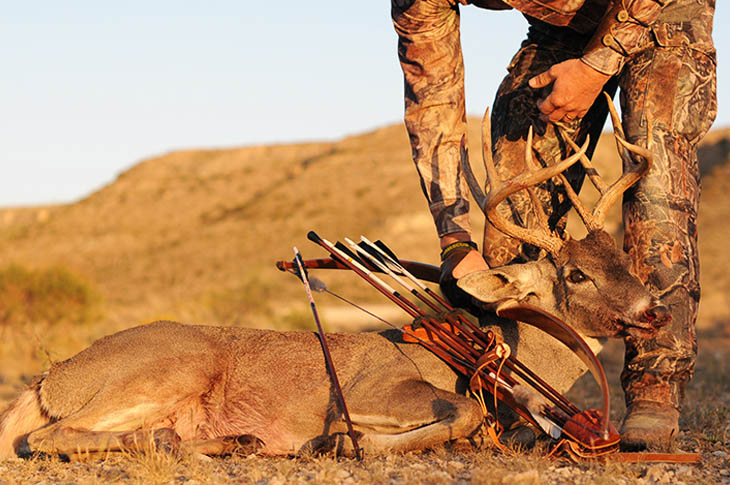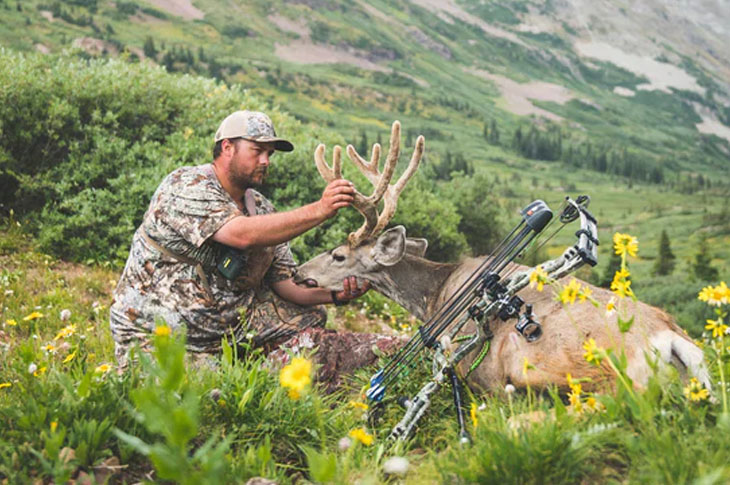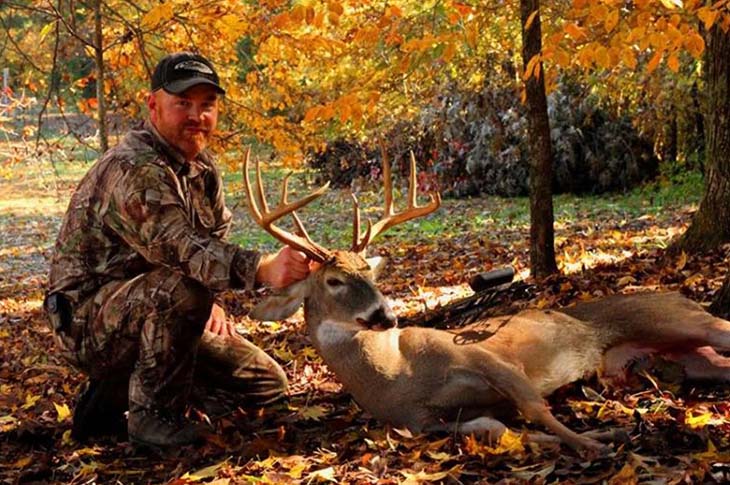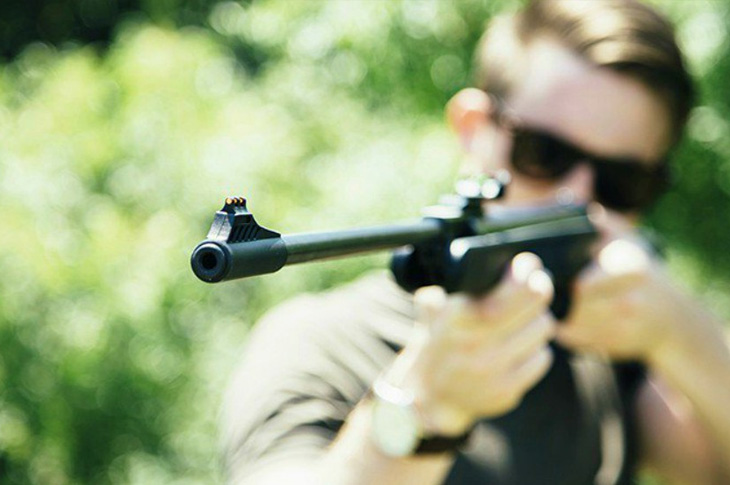Bowhunting is a captivating blend of skill, patience, and connection with nature. It’s not merely about shooting arrows; it’s an ancient practice that has evolved over millennia, adapting to the modern world yet retaining its primal essence. Bowhunting was an early human survival skill that was necessary to obtain sustenance. Today, it stands as both a recreational activity and a challenging sport.
Embracing bowhunting means stepping into a world where precision meets passion, and every hunt is a lesson in patience and perseverance. For many, it’s more than just a hobby; it’s a way to connect with the wild, to understand and respect the delicate balance of nature, and to be part of a tradition that has spanned generations. Whether you’re seeking the thrill of the chase or the serenity of the outdoors, bowhunting offers an unparalleled experience.
The Rich History of Bowhunting
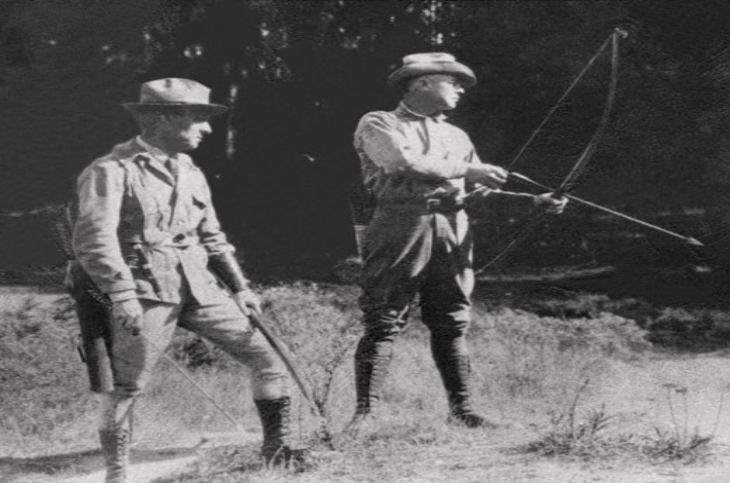
Bowhunting is more than just a method of hunting; it’s a testament to humanity’s resilience, innovation, and connection with nature. Over the centuries, bowhunting has evolved, but its essence remains deeply rooted in our history.
From Ancient Tribes to Modern Sport
Bowhunting’s origins reach deep into ancient times when tribes regarded bows and arrows as essential lifelines. Beyond mere tools, they were indispensable for sustenance, defense, and sacred rituals. Evidence of its significance is found in cave paintings and relics worldwide. As time advanced and with the emergence of agriculture and technology, the bow’s primary survival role waned.
But its decline in daily utility marked its rise in another realm: sport. The intricate art of bowhunting thrived in competitive scenarios, with archery events elevating its stature. Nowadays, bowhunting serves as a link between our past and present. Many see it as an exhilarating sport, while others view it as a cherished connection to ancestry, nature, and a resilient tradition. This transition from ancient utility to contemporary recreation and sport showcases bowhunting’s enduring allure and evolution.
Types of Bows
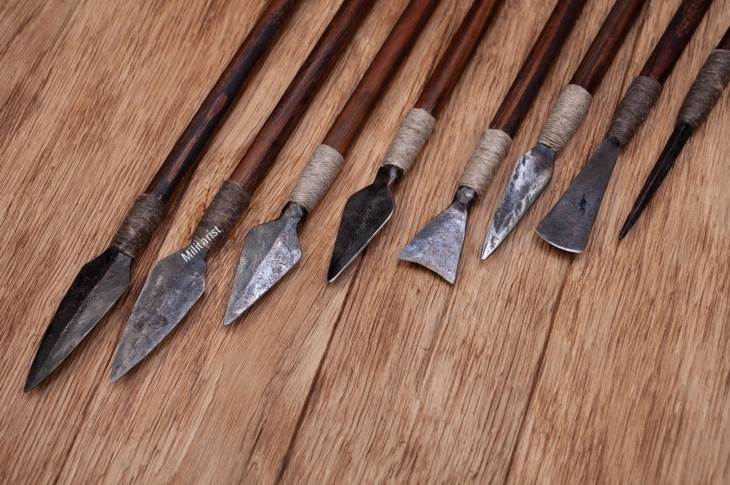
Selecting the perfect bow is akin to the magic of choosing the right wand in the world of wizards. Each bow is distinct in its design, function, and historical significance, making the choice paramount for a successful bowhunting experience.
Recurve Bows
Named for their distinctive shape, recurve bows have limbs that curve away from the user at the tips. This unique design allows a greater force to be stored, providing more power during the shot. The recurve bow’s elegance and efficiency make it a favorite choice for many, from those just stepping into the world of archery to seasoned professionals competing in the Olympics. It’s simple yet effective design ensures it remains one of the most popular types of bows in the market.
Compound Bows
When modern engineering intersects with ancient bow hunting practices, you get the compound bow. These bows, which have pulleys or cams, make it easy for the archer to draw back large draw weights. Once fully drawn, the pulley system significantly reduces the holding weight, enabling the archer to take more precise shots with less physical strain. Thanks to this technology, compound bows offer unmatched power and accuracy, making them a top choice for many hunting enthusiasts.
Longbows
The longbow, steeped in legend and history, is the archetypal medieval weapon. It embodies simplicity with its long, gently curved shape. Because it lacks the compound’s contemporary innovations and the recurve’s distinctive curves, the longbow demands physical strength and ability. However, its range and power cannot be disputed. This bow, made famous by myths such as Robin Hood, has endured throughout history and remains a favorite among traditional archery fans.
Crossbows
The crossbow is where traditional archery meets innovation. Resembling a merger between a bow and a rifle, it consists of a horizontal bow-like assembly mounted on a stock. Instead of being drawn back by hand, the crossbow uses a mechanism to draw and release the string. Its design allows for precise shots with high power, often making it a preferred choice for those who want the archery feel with the added benefits of modern mechanics. While it operates differently than traditional bows, its effectiveness in hunting and target shooting is undeniable.
Essential Equipment for Bowhunting

Bowhunting is a meticulous sport that demands precision, patience, and the right gear. While your bow is the centerpiece, several other pieces of equipment are crucial for a successful and safe hunting experience. Here’s a rundown of the essential equipment every bowhunter should consider:
Arrows
In archery and bowhunting, arrows are crucial for the precision of shots. Constructed from lightweight carbon, consistent aluminum, or hybrid combinations, they cater to varied bowhunting requirements. Fletchings, made of plastic, feathers, or other substances, stabilize the arrow during flight, ensuring accuracy. Yet, in hunting, the broadhead is vital. With options like fixed-blade, mechanical, or hybrid, this sharp tip is crafted for effectiveness. Each part, from shaft to tip, makes the arrow an essential bowhunting instrument.
Quiver
An essential companion for every archer, the quiver serves as a reliable holster for arrows. Whether attached directly to the bow, strapped around the waist like a belt, or slung over the shoulders for a classic back-worn look, quivers are designed with accessibility in mind. Their primary purpose is to ensure that arrows remain at the ready for swift retrieval while also providing a secure storage solution that prioritizes both safety and convenience. Essentially, a quiver streamlines the archery experience, making every shot count.
Bow Sights
Integral to an archer’s toolkit, bow sights enhance aiming precision, guiding the eye and ensuring each arrow flies true. These devices come in diverse forms to suit various needs: pin sights with adjustable pins for tailored targeting, pendulum sights perfect for elevated shots, and digital sights that usher in modern technology for pinpoint accuracy. In essence, bow sights bridge intention and execution, refining the archer’s focus to hit the mark every time.
Release Aids
In the world of bowhunting, consistency is king. Enter release aids – mechanical marvels designed to ensure a smooth and consistent bowstring release. From wrist-strap releases that offer a hands-free experience and handheld releases for those who prefer manual control to thumb-trigger releases for quick and efficient shots, these devices are crucial for achieving precision in every release.
Arm Guards and Finger Tabs
Venturing into archery? Safety first! Arm guards and finger tabs are your defensive duo against the bowstring’s snap. These protective pieces shield the arm and fingers from potential harm, ensuring that every release is smooth and injury-free. They’re especially beneficial for novices navigating the bow’s recoil, offering safety and confidence in every shot.
Bow Stabilizer
Every archer knows that the devil is in the details. The bow stabilizer is a testament to that belief. This invaluable attachment is designed to dampen both vibration and noise, ensuring that each shot is not only smoother but also stealthier. Enhancing stability and reducing the bow’s kickback ensures that every arrow release is fluid, making the archer’s experience both efficient and enjoyable.
Camouflage Clothing
In hunting, being unseen is often the key to success. Camouflage clothing plays a pivotal role in this stealthy pursuit. Camo clothing is designed to resemble the natural surroundings, enabling the hunter to blend in. By disrupting the human outline and mirroring natural patterns, it ensures the hunter remains a ghost in the wilderness, eluding the ever-watchful eyes of their prey.
Bowhunting Techniques
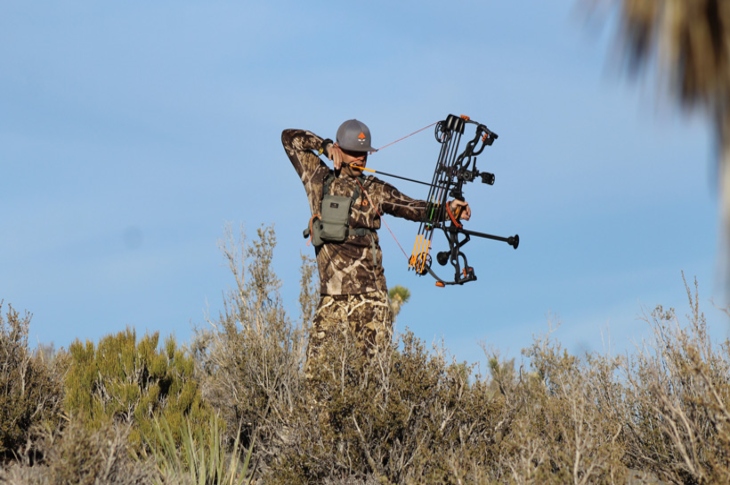
Spot and Stalk
Spot and stalk is a favorite method among bowhunters who thrive on the adrenaline of the chase. It involves identifying a target from afar, using binoculars, or spotting scopes. Once the prey is located, the real challenge begins. The hunter must use natural cover, shadows, and the wind direction to approach the animal without being detected. This technique demands not just physical fitness but also immense patience and mental fortitude.
Ambush Hunting
Ambush hunting harks back to the primal instincts of our ancestors. This method involves identifying areas where game frequently travels or rests, like waterholes, feeding grounds, or established trails. The hunter then positions themselves discreetly and waits, sometimes for hours, for the prey to arrive. It’s a game of patience and endurance. Over time, you begin to feel a deep connection to the environment, attuning to the sounds and rhythms of nature. When the animal finally appears, the sense of anticipation and thrill is unparalleled.
Tree Stand Shooting
Elevating oneself above the ground offers several advantages in bowhunting. With tree stand shooting, hunters perch on platforms fixed to trees, giving them an unobstructed view of the landscape below. Being elevated reduces the chances of the game detecting the hunter’s scent or spotting subtle movements. It also offers a clear line of shots, avoiding obstructions like shrubs or terrain. However, safety is a paramount concern. Ensuring the stand is securely fixed and always using a harness can prevent potential falls.
Ground Blinds
Ground blinds provide bowhunters with camouflage and concealment at eye level with their prey. These are structures, either natural or artificial, that hunters sit inside, with slits or windows for observation and shooting. They can be made of natural materials like branches and foliage or from fabrics with camo prints. Ground blinds are particularly effective in open areas where elevation isn’t available or practical. Setting them up in advance allows the local wildlife to get accustomed to their presence.
Driven Bowhunt
This technique is a communal affair, combining the efforts of several hunters. While a group, the “drivers”, moves slowly through an area, making noise to stir the game, another group, the “standers”, waits in a predetermined spot to intercept the fleeing animals. Coordination, communication, and safety are crucial in this method. The drivers must ensure they don’t drive the game too fast, and the standards must be ever vigilant, ensuring they have a clear shot without risking hitting a fellow hunter.
Safety Tips for Bowhunters
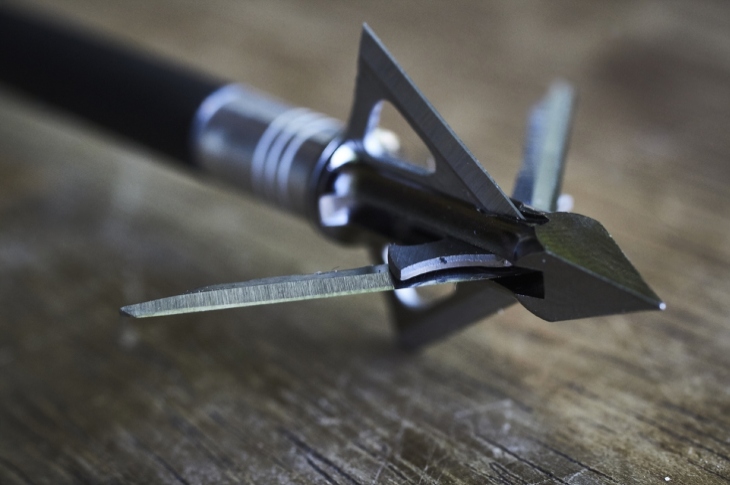
Always Check Equipment Before Use
Venturing into bowhunting without a thorough equipment check is akin to diving into waters without testing its depth. Your bow and arrows are essential to hunting. Optimizing their condition before each hunt is crucial. Inspections for wear and tear, cracks, and damage should go beyond periodic checks. Imagine a simple omission causing your hunting gear to malfunction. It can endanger your quest and your safety. A well-maintained equipment set improves safety, accuracy, and hunting enjoyment.
Wear a Harness in Tree Stands
Imagine having a bird’s-eye view from a tree stand, a vantage point offering a clear sight of the prey. Now, imagine slipping from that height! The thought itself is daunting. Hence, if you’re opting for tree stand hunting, wearing a full-body safety harness isn’t just advisable. It’s essential. The wilderness is unpredictable, and falls from tree stands are unfortunately not uncommon. A safety harness acts as your silent guardian, ensuring that even if you lose balance, you won’t face a scary fall. It’s a shield that stands between a hunter and potential injuries or even fatal accidents.
Stay Aware of Your Surroundings
The wilderness is a vast tapestry of unpredictable moments. Being lost in its beauty is easy, but as a bowhunter, being alert is non-negotiable. Awareness extends beyond just looking out for the prey. It encompasses knowing the whereabouts of fellow hunters, discerning the nuances of the terrain, and recognizing the signs of wildlife nearby. Think of it as having an internal radar constantly scanning the environment. Vigilance helps avoid unexpected threats. Being aware of your surroundings is your first defense against another hunter’s fire or a startled animal.
Practice Safe Arrow Handling
Handling arrows might seem like second nature to a seasoned bowhunter, but the importance of safety can’t be overstated. An arrow, when handled incorrectly, can be as dangerous as a loaded gun. Ensuring that the arrow is securely nocked before drawing the bow is the first step. Post-shooting, resist the urge to stop a drawn bow manually. If the shot doesn’t feel right, release the tension with care. And remember, just as one wouldn’t wave a loaded gun around, always ensure arrows point in a safe direction.
FAQ’s
[sc_fs_multi_faq headline-0=”h3″ question-0=”Which bow is best for beginners?” answer-0=”Recurve bows are the go-to choice for beginners. They are characterized by their simplicity, ease of use, and versatility, making them an excellent starting point for novice archers. ” image-0=”” headline-1=”h3″ question-1=”Is bowhunting safe?” answer-1=”Absolutely! Bowhunting, when approached with proper training and adherence to safety measures, is a safe and rewarding activity. It’s essential to prioritize safety at all times. ” image-1=”” headline-2=”h3″ question-2=”Can children learn bowhunting?” answer-2=”Certainly! Children can delve into archery and bowhunting basics, provided they use suitable equipment and are under constant adult supervision. It’s a great way to instill discipline and patience. ” image-2=”” headline-3=”h3″ question-3=”How do I start with bowhunting?” answer-3=”Initiate your bowhunting journey with comprehensive training, familiarize yourself with local hunting regulations, and invest in appropriate gear. Joining local archery clubs or seeking a mentor can expedite the learning process. ” image-3=”” headline-4=”h3″ question-4=”Do I need a license for bowhunting?” answer-4=”In most areas, a hunting license is a prerequisite. Additionally, there might be special permits required for bowhunting. It’s imperative to consult local hunting regulations before embarking on any hunting expedition. ” image-4=”” count=”5″ html=”true” css_class=””]
Conclusion
The history of bowhunting, its rich history, and bowhunting techniques will all be covered in Enjoy Hunting Life. Bowhunting is more than just a sport; it’s a bridge to our ancestral roots, melding ancient techniques with modern innovations. It challenges individuals physically and mentally, demanding patience, precision, and a deep understanding of nature. As enthusiasts embark on this journey, they dance with the wilderness, cultivating respect for the environment and the animals they pursue. Whether for sustenance, sport, or spirituality, bowhunting is a timeless pursuit that continues to captivate and inspire.

